Related Research Articles

Simon & Garfunkel were an American folk rock duo consisting of singer-songwriter Paul Simon and singer Art Garfunkel. One of the best-selling music acts of the 1960s, their most famous recordings include three US number ones: "The Sound of Silence" (1965) and the two Record of the Year Grammy winners "Mrs. Robinson" (1968) and "Bridge over Troubled Water" (1970). Other hits include "The Boxer" (1969), "Cecilia" (1970) and the four 1966 releases "Homeward Bound", "I Am a Rock", "Scarborough Fair/Canticle" and "A Hazy Shade of Winter", as well as the 1968 album track "America".
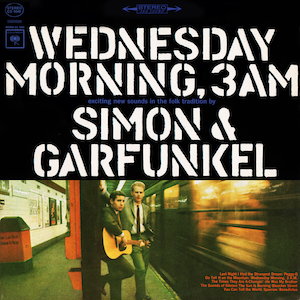
Wednesday Morning, 3 A.M. is the debut studio album by American folk rock duo Simon & Garfunkel. Following their early gig as "Tom and Jerry", Columbia Records signed the two in late 1963. It was produced by Tom Wilson and engineered by Roy Halee. The cover and the label include the subtitle exciting new sounds in the folk tradition. Recorded in March 1964, the album was released on October 19.
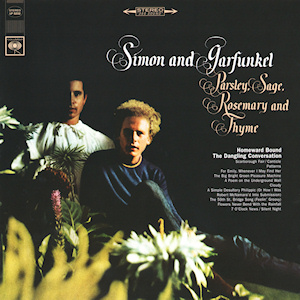
Parsley, Sage, Rosemary and Thyme is the third studio album by American folk rock duo Simon & Garfunkel. Produced by Bob Johnston, the album was released on October 24, 1966, in the United States by Columbia Records. Following the success of the re-release of their debut single "The Sound of Silence", Simon & Garfunkel regrouped after a time apart while Columbia issued their second album, a rushed collection titled Sounds of Silence. For their third album, the duo spent almost three months in the studio working on instrumentation and production.

Bookends is the fourth studio album by American folk rock duo Simon & Garfunkel. Produced by Paul Simon, Art Garfunkel and Roy Halee, the album was released on April 3, 1968, in the United States by Columbia Records. The duo had risen to fame two years prior with the albums Sounds of Silence and Parsley, Sage, Rosemary and Thyme and the soundtrack album for the 1967 film The Graduate.

Paul Frederic Simon is an American singer-songwriter known both for his solo work and his collaboration with Art Garfunkel. He and his school friend Garfunkel, whom he met in 1953, came to prominence in the 1960s as Simon & Garfunkel. Their blend of folk and rock, including hits such as "The Sound of Silence", "Mrs. Robinson", "America" and "The Boxer", served as a soundtrack to the counterculture movement. Their final album, Bridge Over Troubled Water (1970), is among the bestselling of all time.
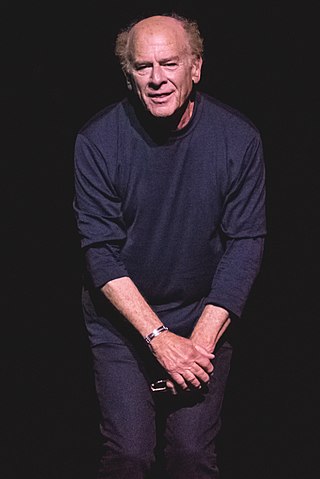
Arthur Ira Garfunkel is an American singer, actor and poet who is best known for his partnership with Paul Simon in the folk rock duo Simon & Garfunkel. Born in Forest Hills, Queens, New York, Garfunkel became acquainted with Simon through an elementary school play, a production of Alice in Wonderland, and sought a partnership. Their combined presence in music began in the 1950s, and throughout the 1960s the duo of Simon & Garfunkel achieved great chart success with tracks such as "The Sound of Silence", "Mrs. Robinson", "Scarborough Fair", "The Boxer" and "Bridge over Troubled Water". The latter song's title also served as the name of Simon & Garfunkel's final album in 1970. Simon & Garfunkel split for personal reasons, but the pair have occasionally reunited in the years since. Both men experienced success in solo careers in the years following the duo's breakup.
The 13th Annual Grammy Awards were held on 16 March 1971, on ABC, and marked the ceremony's first live telecast. They recognized accomplishments by musicians from the year 1970. The ceremony was hosted for the first time by Andy Williams.
The 11th Annual Grammy Awards were held on March 12, 1969. They recognized accomplishments of musicians for the year 1968.
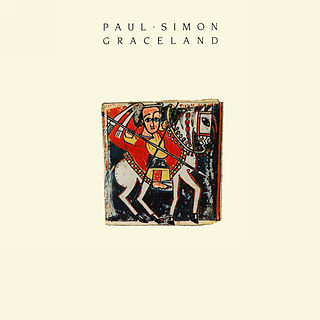
Graceland is the seventh solo studio album by the American singer-songwriter Paul Simon. It was produced by Simon, engineered by Roy Halee and released on August 25, 1986, by Warner Bros. Records. It features an eclectic mixture of genres, including pop, rock, a cappella, zydeco, isicathamiya and mbaqanga, inspired by the music of South Africa.

Hearts and Bones is the sixth solo studio album by American singer-songwriter Paul Simon. It was released in 1983 by Warner Bros. Records.

"Bridge over Troubled Water" is a song by the American folk rock duo Simon & Garfunkel, released in January 1970 as the second single from their fifth studio album, Bridge over Troubled Water (1970). It was written by Paul Simon and produced by Simon, Art Garfunkel and Roy Halee.

Philip Rabinowitz, better known as Phil Ramone, was a South African-born American recording engineer, record producer, violinist and composer, who in 1958 co-founded A & R Recording, Inc., a recording studio with business partner Jack Arnold at 112 West 48th Street, New York, upstairs from the famous musicians' watering hole, Jim & Andy's, and several doors east of Manny's Music. The success of the original A & R Recording allowed it to expand into several studios and a record production company. He was described by Billboard as "legendary", and the BBC as a "CD pioneer".

"America" is a song performed by American music duo Simon & Garfunkel, which they included on their fourth studio album, Bookends, in 1968. It was produced by the duo and Roy Halee. The song was later issued as the B-side of the single "For Emily, Whenever I May Find Her " in 1972 to promote the release of the compilation album Simon and Garfunkel's Greatest Hits. After peaking in the charts in July 1972, the song was switched to the A-side of the single and re-entered the charts in November 1972.

"The Boxer" is a song written by Paul Simon and recorded by the American music duo Simon & Garfunkel from their fifth and final studio album, Bridge over Troubled Water (1970). Produced by the duo and Roy Halee, it was released as a standalone single on March 21, 1969, but included on the album nine months later. The song is a folk rock ballad that variously takes the form of a first-person lament as well as a third-person sketch of a boxer. The lyrics are largely autobiographical and partially inspired by the Bible and were written during a time when Simon felt he was being unfairly criticized. The song's lyrics discuss poverty and loneliness. It is particularly known for its plaintive refrain, in which they sing 'lie-la-lie', accompanied by a heavily reverbed snare drum.

"You Can Call Me Al" is a song by American singer-songwriter Paul Simon. It was the lead single from his seventh studio album, Graceland (1986), released on Warner Bros. Records. Written by Simon, its lyrics follow an individual seemingly experiencing a midlife crisis. Its lyrics were partially inspired by Simon's trip to South Africa and experience with its culture. Released in July 1986, "You Can Call Me Al" became one of Simon's biggest solo hits, reaching the top five in seven countries.

"Mrs. Robinson" is a song by American folk rock duo Simon & Garfunkel from their fourth studio album, Bookends (1968). The writing of the song was begun before the 1967 film The Graduate, which contained only fragments of it. The full song was released as a single on April 5, 1968, by Columbia Records. Produced by the duo and Roy Halee, the song was written by Paul Simon, who offered parts of it to movie director Mike Nichols alongside Art Garfunkel after Nichols rejected two other songs intended for the film. The Graduate's soundtrack album uses two short versions of "Mrs. Robinson"; The full song was published on the album Bookends. The song was additionally released on the Mrs. Robinson EP in 1968, which also included three other songs from the film: "April Come She Will", "Scarborough Fair/Canticle", and "The Sound of Silence".

Angel Clare is the debut solo studio album by Art Garfunkel, released on September 11, 1973. It is his highest-charting solo album in the United States, peaking at No. 5 on the Billboard 200, and includes his only US Top 10 hit as a solo artist, "All I Know". It also contained two other Top 40 hits, "Traveling Boy" and "I Shall Sing". It was produced by long-time Simon & Garfunkel producer Roy Halee, alongside Art Garfunkel.
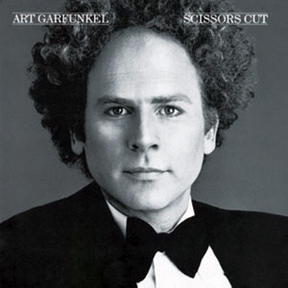
Scissors Cut is the fifth solo studio album by Art Garfunkel. It was released in August 1981 on Columbia Records; it was his second album to miss the US Billboard top 40 and his second album to contain no US top 40 singles. In the month following its release, Garfunkel reunited with former partner Paul Simon for their famous 1981 Concert in Central Park.

Bridge over Troubled Water is the fifth and final studio album by American folk rock duo Simon & Garfunkel, released on January 26, 1970 on Columbia Records. Following the duo's soundtrack for The Graduate, Art Garfunkel took an acting role in the film Catch-22, while Paul Simon worked on the songs, writing all tracks except Felice and Boudleaux Bryant's "Bye Bye Love".

The Collection: Simon & Garfunkel is the fourth box set of Simon & Garfunkel recordings. Initially released November 15, 2004 as a 3-CD set of the second, fourth and fifth Simon & Garfunkel studio albums, it was later reissued November 26, 2007, expanded to six discs, including all five studio albums, plus a DVD of the September 19, 1981 free concert in Central Park. All six discs are in a mini-LP format and the albums come with the bonus tracks that were presented in The Columbia Studio Recordings (1964-1970). All of the discs in the 6-CD collection, and their cases, are housed in a box set featuring a silhouetted image of the duo with Paul Simon holding an acoustic guitar and Art Garfunkel sitting on a stool. The earlier 3-CD set had alternative artwork with a photo of the duo.
References
- ↑ Walter Halee
- ↑ Vilkomerson, Sara, "Countdown to Bliss: Roy Halee Jr. and Yvonne Miller", The New York Observer , April 4, 2005
- ↑ Robert Hilburn, Paul Simon - The Life, Simon & Schuster, 2019, p.59
- ↑ "Rebekah Halee, at 62; Ex-Broadway Actress". Newsday (Suffolk Edition). 1963-11-26. p. 22. Retrieved 2022-08-16– via Newspapers.com.
- 1 2 Jackson, Blair (1 October 2001). "Roy Halee". Mix. Retrieved 1 May 2024.
- 1 2 3 "2001 Hall of Fame Inductee Roy Halee". Mix Foundation. 2001. Archived from the original on 4 July 2008. Retrieved 1 May 2024.
- 1 2 Buskin, Richard (September 2008). "Classic Tracks: Paul Simon 'You Can Call me Al'". Soun On Sound. Retrieved 1 May 2024.
- ↑ Zollo, Paul (5 December 2020). "Garfunkel: On Being Paul Simon's First Champion". American Songwriter. Retrieved 9 July 2021.
- ↑ "Halee To Produce At ABC" (PDF). Billboard : 33. 29 Nov 1975.
- ↑ Marre, J., (Documentary, ISIS Productions/Daniel Television/Paul Simon 1997)
- ↑ Luftig, S., The Paul Simon Companion, Four Decades of Commentary, pp. 197–198 (Biography, Schirmer Books/Omnibus Press New York, 1997)
- ↑ Gassman, Ian (19 January 2017). "Roy Halee, the legend behind Paul Simon, keeps hidden in Boulder". Denver Post. Retrieved 1 May 2024.